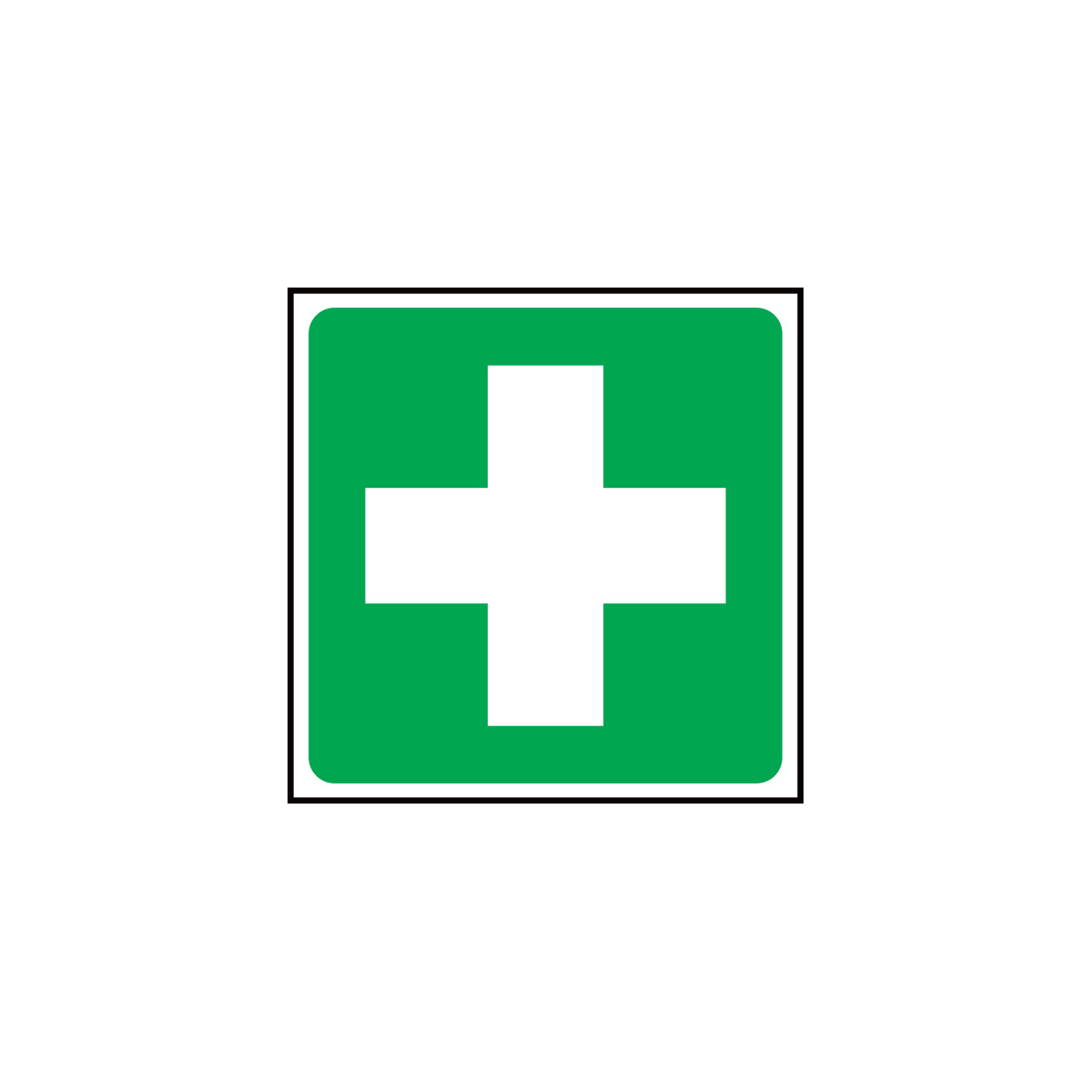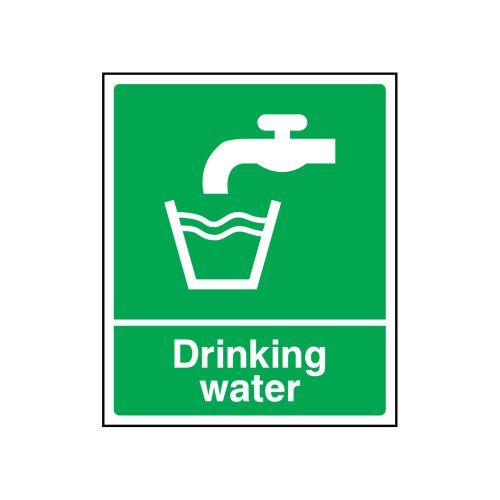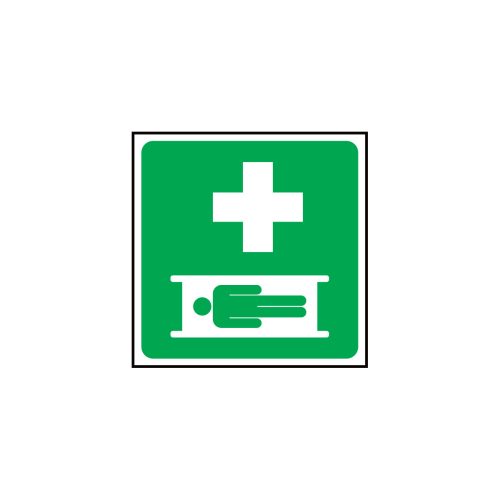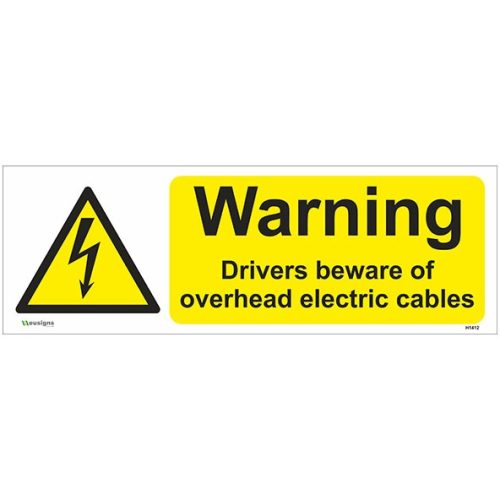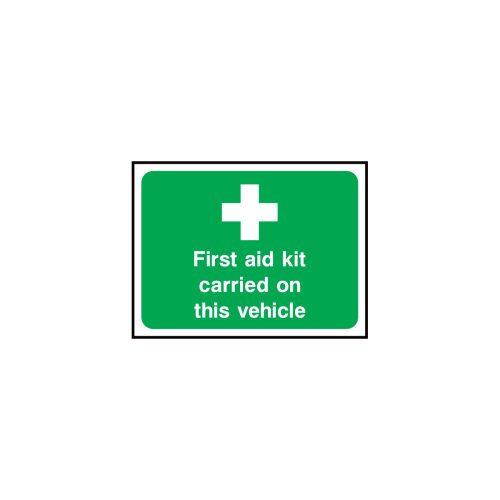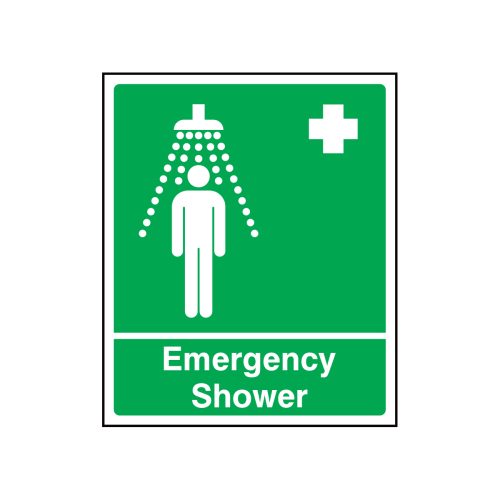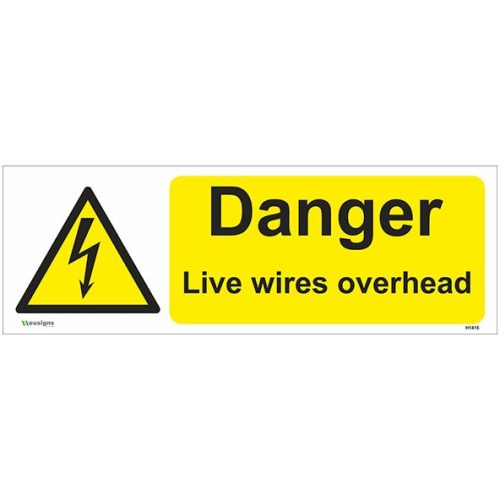Product Categories
- Health and Safety Signs
- First Aid Signs
- Construction Signs
- Warning Signs
- Footpath Signs
- Combination Safety Signs
- Protective Equipment Signs
- Office Signs
- Social Distancing Essentials
- CCTV in Operation Signs
- Information Signs
- Garage Signs
- Health & Safety Posters
- Door Signs
- Health and Safety Stickers
- Custom Printed Banners
- Printed Business Stationery
- Workwear
- Deals
First Aid Symbol-E003
£0.75 – £31.30Price range: £0.75 through £31.30
SKU: FAID2025
First Aid Symbol-E003
All the signs in the First Aid Signs and category conform to the EN ISO 7010. Please contact us at info@eusigns.co.uk for customised size and design requests.
First Aid Symbol – E003
The First Aid Symbol – E003 is the globally recognised green cross that points people to first aid help in seconds. Because it’s an ISO 7010-compliant pictogram, the icon communicates instantly without any text. That speed matters in real-world emergencies where noise, language barriers, or stress make words harder to process. Choose neat, square formats in 200 mm, 300 mm or 400 mm to mark kits, rooms and stations consistently across your site.
What makes the E003 first aid symbol essential?
UK employers must provide adequate first-aid equipment and information so that employees know where to find it. The Health and Safety (Safety Signs and Signals) Regulations adopt the EN ISO 7010 library of safety symbols, which includes E003 for first aid. Using this icon keeps your site consistent with best practice and helps you pass audits with ease.
Key benefits at a glance
- Conforms to ISO 7010 (E003): the correct green square with white cross for universal recognition.
- Icon-only clarity: readable at a glance in multilingual or noisy settings.
- Right size for every location: 200, 300 or 400 mm to suit kits, doors and long-view walls.
- UK-made durability: high-contrast print and wipe-clean surface for busy areas.
- Fits your scheme: pair with First Aid Box signs, First Aid Room signs and AED signs for a consistent system.
When and where to use the First Aid Symbol – E003
Place the sign wherever first-aid help can be found quickly. Because the symbol is square and compact, you can build a simple wayfinding system with small markers for close-up locations and larger panels for long-distance visibility.
Typical placements
- First aid kits & cabinets: apply the 200 mm sticker directly to kit doors, cupboards and trolleys.
- First aid rooms: use 300–400 mm signs on the main door and repeat along approach routes.
- Reception & hubs: place at help points and security stations where trained first-aiders are based.
- High-risk zones: workshops, warehouses and kitchens benefit from larger 400 mm signs for quick orientation.
- Sports & education: mark PE stores, gym walls and nurse offices so pupils and visitors can react fast.
Integrating with other emergency signs
For a cohesive scheme, combine this symbol with complementary products: Assembly Point signs for evacuation planning, Exit signs for safe egress, and general First Aid signs to label kits, eyewash stations and spill response sets. A consistent layout reduces hesitation and improves outcomes.
Legal & standards information (UK)
Under the Management of Health and Safety at Work Regulations and the Health and Safety (First-Aid) Regulations 1981, employers must assess first-aid needs and provide suitable facilities and information. The Safety Signs and Signals Regulations 1996 implement EU Directive 92/58/EEC and point to standardised colours and shapes. In practice this means:
- Safety colour: Green field with white symbol for safe conditions and first aid.
- Shape: Square or rectangular for safe-condition signs.
- Symbol: The ISO 7010 code E003 (white cross) for first aid.
For official guidance on first-aid arrangements, visit the HSE’s page on First aid at work. Following these resources will help you document why you have chosen particular sizes and locations, and it supports internal audits and insurance checks.
Choosing the right size
Sign size should match viewing distance. As a simple rule of thumb, aim for around 1 mm of symbol height per metre of viewing distance for clear recognition, then adjust for lighting and obstructions.
| Sign size | Suggested use | Typical viewing distance |
|---|---|---|
| 200 mm square | Cabinets, doors, machinery housings, vehicle lockers | Up to ~10 m |
| 300 mm square | Room doors, corridor walls, workshops | Up to ~15 m |
| 400 mm square | Warehouses, sports halls, large open areas | Up to ~20 m |
Installation & maintenance
Surface preparation
Clean, dry and de-grease the surface. For stickers, avoid dusty masonry or textured paint; for rigid panels, use suitable mechanical fixings or VHB tape. If mounting on glass, ensure the background remains green for contrast.
Positioning tips
- Mount at consistent eye level (typically 1.5–1.7 m to sign centre).
- Keep clear lines of sight: avoid door swings, open shelving and seasonal displays.
- Repeat signs along long routes or where pillars interrupt visibility.
- Pair the icon with text-led panels only if local procedure requires additional wording.
Inspection & cleaning
Include signage in your regular workplace inspections. Replace any sign that is faded, cracked or no longer legible. Wipe with mild detergent; avoid abrasive pads that could dull the surface.
Design consistency and accessibility
Emergency information must be recognised quickly by everyone on site. To support accessibility, keep consistent colours and avoid novelty icons. Where staff have colour-vision deficiency, the strong shape contrast of the white cross on green helps recognition. In public-facing venues, consider adding one First Aid Room text sign near reception to assist visitors, while keeping the core E003 symbol for universal comprehension.
Building a complete first aid signage kit
Most organisations combine the First Aid Symbol with a small set of related products to cover every touchpoint from reporting to response:
- “Your First Aiders Are” signs to list trained personnel and contact points.
- First Aid Box labels for kits, wall cabinets and mobile caddies.
- AED / Defibrillator signs (ISO E010/E011) for cardiac emergencies.
- Emergency Eye Wash symbols near eyewash stations.
- First aid posters that provide step-by-step guidance while help arrives.
Risk assessment notes
As part of your first-aid needs assessment, document where first-aid resources are located and how people will find them. Note any special risks such as chemicals, moving vehicles, remote working, and ensure the E003 icon is visible from the most likely incident locations. Where contractors or visitors are present, repeat signage in shared corridors and near muster points to reduce search time.
Frequently asked questions
Is this the correct symbol for defibrillators?
No. AEDs use ISO 7010 symbols E010/E011 (heart and bolt). Use this E003 cross to signpost general first aid locations, first-aid rooms and kits. See our AED signs for the correct icons.
Do I need text as well as the symbol?
ISO 7010 encourages symbol-led design so that signs work without translation. Many sites use the icon alone on doors and cupboards, then support with a text panel nearby (for example, First Aid Room).
How many signs should a medium site use?
Provide at least one sign per first-aid resource and repeat along approach routes. In a typical two-storey office with one first-aid room and two wall kits, you might use: two 300 mm door signs, three 200 mm kit markers and two 400 mm wayfinding panels in open areas.
Sustainability & lifecycle
Our UK manufacture keeps transport miles low and enables consistent quality. When upgrading or refitting, recycle rigid substrates where facilities exist and dispose of self-adhesive waste responsibly. Longer-lasting, standards-based designs reduce replacement frequency and waste over the product lifecycle.
Specification summary
- Pictogram: ISO 7010 E003 (white cross on green)
- Shape: Square safe-condition sign
- Sizes: 200 mm, 300 mm, 400 mm
- Finish: High-contrast, wipe-clean surface
- Use: Indoor and covered outdoor locations
- Compatibility: Works with our First Aid range, Exit signs and Assembly Point signage
Get compliant, stay consistent
Clear, consistent emergency marking prevents delays and supports your legal duties. The First Aid Symbol – E003 is the fastest, most intuitive way to guide people to help—whether they are employees, contractors or visitors. Standardise your site with the correct icon today and combine it with our first-aid wallcharts and supporting first-aid signs for a complete, professional system.
Featured Products:
Related products
From: £2.25
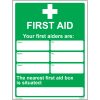

From: £2.25
